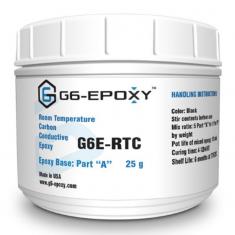The following is a sponsored post by Graphene Labs
Graphene nanoplatelets (GNPs), unique materials produced from natural graphite, are finding their way into a wide variety of commercial products including nanocomposites, lubricants, additives to battery electrodes, functional textiles, as well as many other applications.

GNPs have quite a few outstanding properties that allow them to be employed in a broad spectrum of applications, including:
- Superb mechanical strength
- Excellent electrical conductivity
- Ability to vastly improve the tensile strength and fracture toughness of polymers
- Low percolation threshold
- Resistance to corrosion
These properties of GNPs help to formulate composite materials with excellent mechanical properties such as high modulus, high failure strength, and improved interfacial bonding. That is why GNPs are used as a reinforcing agent in the formulation of coatings as well as structural materials. Incorporation of GNPs to formulate graphene additives offers a useful technique to manufacture electrically conductive thermoplastic and thermoset polymer composites.
G6-EpoxyTM: A Revolutionary Electrically Conductive Adhesive
A perfect example of the market segment that can significantly benefit from the use of these graphene additives is the G6-EpoxyTM, a new product line of Electrically Conductive Adhesives (ECA) introduced by the research team of Graphene 3D Lab. Graphene additives for ECA utilize both the outstanding conductivity and mechanical strength of GNPs, helping them to improve the bond strength of the adhesive.
ECAs are commonly used as a replacement for traditional tin-lead solders, especially for mounting heat sensitive electronic components and for applications where the use of solder is not practical, such as connecting conductive glass in displays and for use in solar cell panels. The fast-growing demand of these adhesives is driven by the ever-increasing use of OLED displays, flexible electronics, and renewable energy sources.
Drawbacks of Traditional ECAs
The ECAs in their current formulation have a range of serious drawbacks. One of the major disadvantages is the volatile and high cost of silver that is used as a conductive filler. Most of the commercially available silver-based adhesives typically require 75-80% of silver load by weight to attain conductivity. The silver particles dispersed in the matrix polymer, must be in physical contact to make the composite conductive. As a result, the cost of silver-based adhesives ranges from USD800 to USD3,000/kg. Furthermore, the high load of silver results in high density, poor flexibility, and a tendency to crack when subjected to mechanical stress.
Graphene nanoplatelets could help to resolve these issues. Adding graphene to the adhesive formulation improves the mechanical performance of the matrix resin. Moreover, graphene nanoplatelets make conductive bridges between the silver particles thereby reducing the load of silver needed to attain conductivity.
G6-EpoxyTM: Conductive, Bonding, Flexible, and Economical
The G6-EpoxyTM line of ECAs, which includes graphene-enhanced conductive epoxies, have exceptional electrical characteristics and are more cost effective in comparison to silver-based counterparts. G6-EpoxyTM offers highly conductive adhesives based on the proprietary combination of carbon and silver fillers along with other additives.
The key unique feature of this material is that a significantly lower silver content (40-50%) is needed to achieve a high electrical conductivity. Furthermore, the higher content of the matrix polymer in these products offers the additional competitive advantage of improved bond strength to a wide variety of substrates including glass, plastic, and fabrics in comparison to silver-loaded commercial adhesives. In addition, the mechanical reinforcement provided by the graphene additive improves the bonding strength of the adhesive.
G6-EpoxyTM products have improved resistance to stress, corrosion, cracking, and fatigue because of their lower silver load requirements. This makes them ideal for wearables, smart textiles, sensor networks, and medical devices. Additional benefits of incorporating graphene may include increased tensile strength and stiffness, reduced flammability, as well as improved thermal and UV stability. Graphene reduces overall density, weight, and cost of epoxy resins, improves operational safety, and increases cured epoxy durability.
These new features of conductive adhesives such as G6-EpoxyTM not only improve and make existing products more viable, they also open the door to emergent applications. An example of such an application could be the manufacturing of the soft conductive electrodes for electro-cardiographs and for electroencephalography.
If you would like to learn more about the G6-EpoxyTM conductive adhesive product line, please refer to the product website.